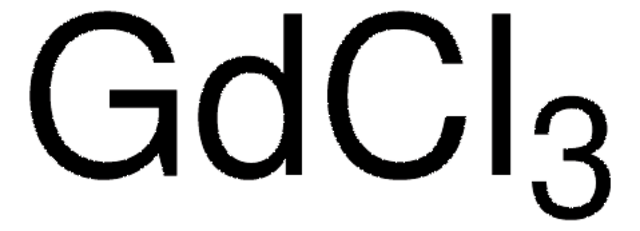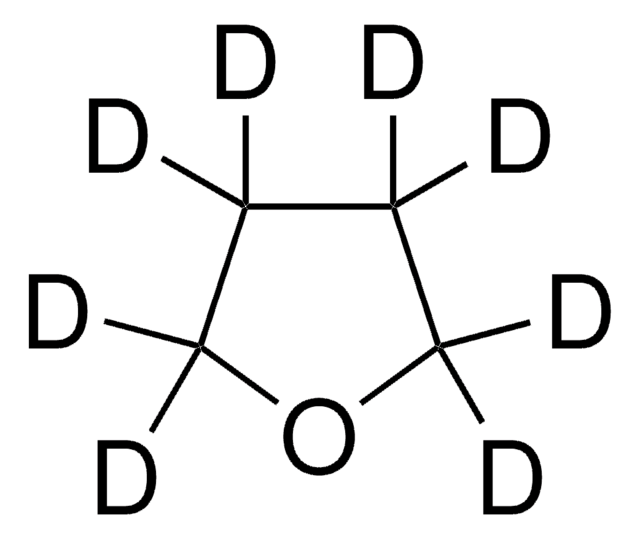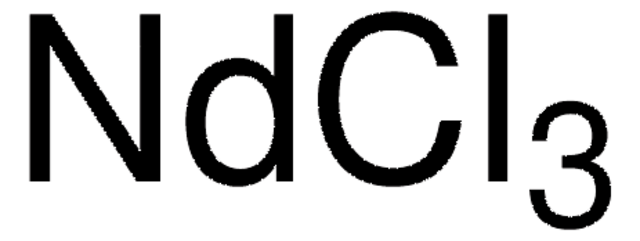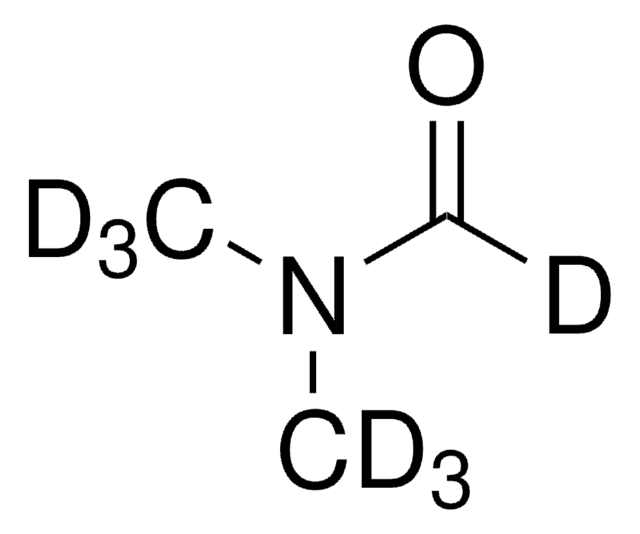Wichtige Dokumente
735949
Gadolinium(III)-chlorid
anhydrous, beads, −10 mesh, 99.99% trace metals basis
Synonym(e):
Gadolinium-trichlorid
About This Item
Empfohlene Produkte
Qualität
anhydrous
Qualitätsniveau
Assay
99.99% trace metals basis
Form
beads
Partikelgröße
−10 mesh
SMILES String
Cl[Gd](Cl)Cl
InChI
1S/3ClH.Gd/h3*1H;/q;;;+3/p-3
InChIKey
MEANOSLIBWSCIT-UHFFFAOYSA-K
Suchen Sie nach ähnlichen Produkten? Aufrufen Leitfaden zum Produktvergleich
Anwendung
Signalwort
Warning
H-Sätze
Gefahreneinstufungen
Skin Irrit. 2
Lagerklassenschlüssel
13 - Non Combustible Solids
WGK
WGK 3
Flammpunkt (°F)
Not applicable
Flammpunkt (°C)
Not applicable
Hier finden Sie alle aktuellen Versionen:
Analysenzertifikate (COA)
Die passende Version wird nicht angezeigt?
Wenn Sie eine bestimmte Version benötigen, können Sie anhand der Lot- oder Chargennummer nach einem spezifischen Zertifikat suchen.
Besitzen Sie dieses Produkt bereits?
In der Dokumentenbibliothek finden Sie die Dokumentation zu den Produkten, die Sie kürzlich erworben haben.
Unser Team von Wissenschaftlern verfügt über Erfahrung in allen Forschungsbereichen einschließlich Life Science, Materialwissenschaften, chemischer Synthese, Chromatographie, Analytik und vielen mehr..
Setzen Sie sich mit dem technischen Dienst in Verbindung.





